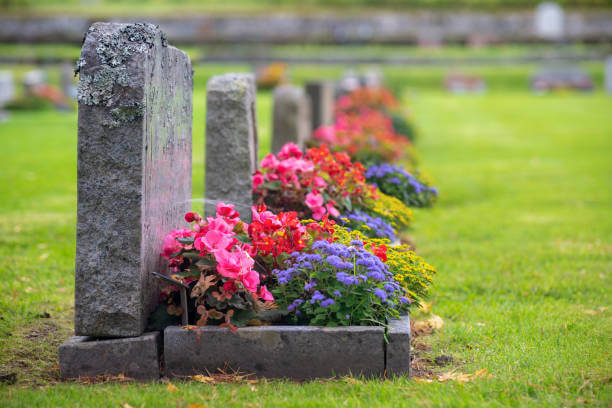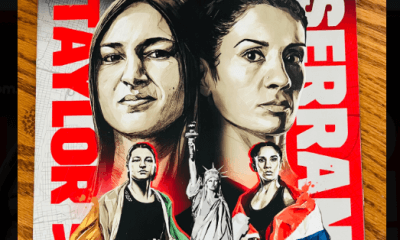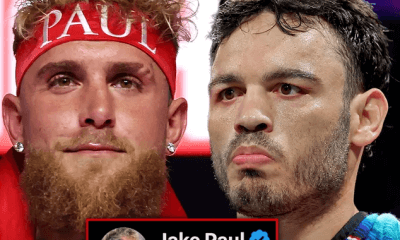Featured Articles
For Whom the Bell Tolled: 2024 Boxing Obituaries PART ONE (Jan.-June)

Here in our annual end-of-year report, we pay homage to the boxing notables who left us in the past year in a two-part story. May they rest in peace.
January
Jan. 22 – CAMERON DUNKIN – Named the BWAA Manager of the Year in 2007, Dunkin was involved with more than 30 world title-holders including Diego Corrales, Kelly Pavlik, and Tim Bradley. It was said of him that no one was better at spotting a diamond-in-the-rough at an amateur boxing tourney. At age 67 in Las Vegas after a long battle with pancreatic cancer.
Jan. 31 – NORMAN “BUMPY” PARRA – Active from 1962 to 1968, Parra, a U.S. Army veteran, was 17-4-5 in documented fights and was briefly recognized as the California bantamweight champion. In retirement he trained several fighters and established several boxing clubs for disadvantaged youth in the San Diego area. At age 84 in San Diego.
February
Feb. 2 – KAZUKI ANAGUCHI – He lost consciousness in his dressing room after losing a close 10-round decision to Seiyo Tsatsumi in Tokyo on Dec, 23, 2003, and spent more than a month in a deep coma before succumbing to his head injury. The see-saw contest, the semi-final to a Naoya Inoue title fight, was named the Japan Domestic Fight of the Year. An Osaka-born bantamweight, Anaguchi was 23.
Feb. 4 – CARL WEATHERS – He appeared in dozens of movies and TV shows but would be best remembered for portraying the Muhammad Ali-inspired character Apollo Creed opposite Sylvester Stallone in the first four installments of the “Rocky” franchise. At his home in Los Angeles where he passed away in his sleep of an undisclosed illness at age 76.
Feb. 13 – IGNACIO ESPINAL – a 1968 Olympian, he never won a world title but had the misfortune of competing in the era of Miguel Canto, arguably the greatest flyweight ever. He was 0-2-1 vs Canto across 35 closely-contested rounds and finished 35-14-4. In Santiago de los Caballeros, Dominican Republic, his birthplace, at age 75.
March
March 4 – JIMMY HEAIR – Raised in Mississippi and Colorado, the son of a Pentecostal minister, he came to the fore in Los Angeles in the mid-1970s, the glory days of the Olympic Auditorium. Heair won his first 33 fights, rising to #3 in The Ring rankings at lightweight and finished 94-34-1 (65 KOs) during a 19-year career in which he answered the bell for 862 rounds. At age 71 at a nursing home in Okolona, Mississippi, after a long battle with pugilistic dementia.
March 22 – ALESIA GRAF – A Belarus-born German, Graf was active as recently as 2019 when she fought Dina Thorslund for the WBO world super bantamweight title. She finished 29-8 with five of her losses coming in legitimate world title fights. At age 43 in Stuttgart of undisclosed causes.
March 22 – BOB LEE SR. – A former police detective, he was the Acting Commissioner of the New Jersey Athletic Commission when he left to found the International Boxing Federation (IBF) in 1983. As president, he instituted several important safety features but his reputation was sullied when he was convicted of taking bribes for higher ratings for which he served 22 months in a federal prison. At age 90 in Edison, New Jersey.
March 26 – LAVELL FINGER – A National Golden Gloves champion at 138 pounds, Lavell and his twin brother Terrell (who passed away in 2019) turned pro on the same card in their hometown of St. Louis in 1989. Lavell was 25-1 when he retired in 2009, returning six years later for three more fights. At age 55 in Katy, Texas.
March 31 – JAN KIES – The South African southpaw answered the bell for 230 rounds during a nine-year career that began in 1969, finishing 31-11. His best win came early in his career when he knocked out former world title-holder Jean Josselin in 63 seconds, sending the Frenchman off into retirement. At age 76 in Krugersdorp, SA.
April
April 7 – RICKEY PARKEY – Active from 1981 to 1994, Parkey lost his last 12 fights to finish 22-20, but in his prime was one of the world’s top cruiserweights. He briefly held he IBF version of the world 190-pound title, a diadem he lost to Evander Holyfield who stopped him in three rounds. At age 67 at a nursing home in his hometown of Murfreesboro, Tennessee, a victim of lung cancer.
April 11 – GARY SHAW – He began his career in boxing as an inspector with the New Jersey Athletic Commission and went on to promote or co-promote some of the highest-grossing fights of the early 20th century before crossing over to MMA. On his 79th birthday at his home in South Florida where he had been bedridden following a January heart attack.
April 15 – WILLIE LIMOND – The Scotsman won a slew of regional titles after turning pro as a lightweight in 1999, finishing with a record of 42-6. In his most recent bout, in September of last year, he was stopped in eight rounds in a heavily-hyped domestic showdown with former three-division title-holder Ricky Burns. At age 45 at a hospital in the Glasgow suburb of Airdie nine days after suffering an apparent seizure while driving.
April 27 – ARDI NDEMBO – A Congolese heavyweight with an undefeated record (8-0, 7 KOs), Ndembo was knocked unconscious on April 5 in Miami while representing the Las Vegas team in the fledgling World Combat League. A 27-year-old father of two, he left the ring on a stretcher, was placed in a medical coma, and died 22 days later without regaining consciousness.
May
May 20 – IRISH PAT MURPHY – A welterweight from West New York, New Jersey, Murphy opened his career with 25 straight wins, earning him a date with Canadian champion Donato Paduano who saddled him with his first defeat. Their match at Madison Square Garden was the main event on a card with George Foreman and Chuck Wepner in supporting bouts. He finished 34-14-2 in a 13-year career that began in 1967. At age 74 at his home in Secaucus, NJ.
May 21 – ART JIMMERSON – A cruiserweight during most of his career, Jimmerson fought the likes of Orlin Norris, Vassiliy Jirov, and Arthur Williams. He lost his last nine fights before transitioning to MMA, finishing his boxing career with a record of 33-18. At age 60 of an apparent aneurism while driving to work at a UFC gym in Los Angeles.
June
June 15 – ENRIQUE PINDER – He became the fifth fighter from Panama to win a world title when he took the WBA/WBC bantamweight belts from Rafael Herrera in 1972, winning a 15-round unanimous decision. His title reign lasted only six months and he left the sport with a 35-7-2 record. In Panama City at age 76 where he had been dealing with heart problems.
June 26 – STEFFEN TANGSTAD – A two-time European heavyweight champion, the Norwegian retired in 1986 with a 24-2-2 record after being stopped in the fourth round by defending IBF world heavyweight champion Mihael Spinks. In retirement he remained in the public eye in Scandinavia as a TV boxing commentator. In Tonsberg, Norway at age 65 after a long battle with a neurological disorder that left him partially paralyzed.
To comment on this story in the Fight Forum CLICK HERE
-

 Featured Articles4 weeks ago
Featured Articles4 weeks agoAvila Perspective, Chap. 330: Matchroom in New York plus the Latest on Canelo-Crawford
-

 Featured Articles3 weeks ago
Featured Articles3 weeks agoVito Mielnicki Jr Whitewashes Kamil Gardzielik Before the Home Folks in Newark
-

 Featured Articles21 hours ago
Featured Articles21 hours agoResults and Recaps from New York Where Taylor Edged Serrano Once Again
-

 Featured Articles4 weeks ago
Featured Articles4 weeks agoCatching Up with Clay Moyle Who Talks About His Massive Collection of Boxing Books
-

 Featured Articles5 days ago
Featured Articles5 days agoFrom a Sympathetic Figure to a Pariah: The Travails of Julio Cesar Chavez Jr
-

 Featured Articles3 weeks ago
Featured Articles3 weeks agoMore Medals for Hawaii’s Patricio Family at the USA Boxing Summer Festival
-

 Featured Articles1 week ago
Featured Articles1 week agoCatterall vs Eubank Ends Prematurely; Catterall Wins a Technical Decision
-

 Featured Articles4 weeks ago
Featured Articles4 weeks agoRichardson Hitchins Batters and Stops George Kambosos at Madison Square Garden




















